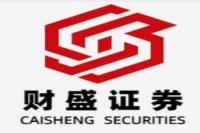Navigating the Market: A Deep Dive into Current Trends and Opportunities
Meta Description: Discover insightful market analysis, including key economic indicators, policy updates, industry opportunities, and technical insights. Explore the latest trends in sectors like AI, semiconductors, and satellite internet, and learn how to capitalize on emerging opportunities.
The market is a dynamic beast, constantly evolving and presenting new challenges and opportunities. Staying informed about the latest trends, economic data, and policy shifts is crucial for investors seeking to navigate this complex landscape. This comprehensive analysis delves into the current market dynamics, providing insights into key sectors, potential investment strategies, and expert opinions on what lies ahead.
In the realm of global finance, the winds of change are blowing, and understanding the direction they're pushing is critical for success. While short-term volatility may be driven by geopolitical events and economic uncertainties, a long-term perspective reveals a more optimistic picture. With a combination of policy support, promising industry trends, and promising economic indicators, the market is poised for growth, demanding astute investors to identify and capitalize on emerging opportunities.
Key Economic Indicators: A Positive Outlook Amidst Volatility
The Chinese economy has demonstrated its resilience, posting a 5% GDP growth in the first half of 2024. This steady upward trajectory, despite global headwinds, underscores the country's robust economic foundation. The second quarter saw a 4.7% year-on-year growth, indicating continued momentum. This positive performance can be attributed to a combination of government initiatives aimed at stimulating economic activity, a gradual recovery in consumer spending, and the emergence of new growth drivers across various sectors.
However, it's important to acknowledge that economic challenges remain. A recent dip in domestic economic data has raised concerns, and the global landscape continues to be impacted by geopolitical events. Navigating these uncertainties requires a nuanced approach, carefully considering both positive and negative factors. The good news is that the Chinese government is actively deploying a range of policy measures to mitigate risks and foster sustainable growth.
Industry Opportunities: The Future is Bright for Emerging Technologies
The current market presents a wealth of investment opportunities for those who can identify the next big thing. One sector ripe with potential is the burgeoning world of satellite internet.
The VDES (VHF Data Exchange System) is poised to revolutionize maritime communication, offering an advanced alternative to the existing AIS (Automatic Identification System). This next-generation technology promises to enhance safety, efficiency, and connectivity for vessels operating across the globe.
The VDES system integrates AIS capabilities with robust communication and data transmission features, opening up a vast array of possibilities. From improved navigation and real-time tracking to enhanced maritime security and environmental monitoring, VDES has the potential to transform the maritime industry.
The rise of satellite internet goes beyond the maritime sector. Its applications span a wide range, including:
- Remote Connectivity: Bringing internet access to underserved communities, including rural areas and regions with limited infrastructure.
- Disaster Relief: Providing crucial communication channels during emergencies and natural disasters.
- Precision Agriculture: Enabling farmers to monitor crop health, optimize resource allocation, and improve yields.
- Internet of Things (IoT): Connecting billions of devices to the internet, powering smart cities, industrial automation, and more.
Investing in companies at the forefront of this technological revolution could offer significant returns, particularly those involved in key aspects of satellite internet infrastructure, such as:
- Satellite Manufacturing: Building and launching the satellites that form the backbone of the network.
- Ground Station Development: Establishing the ground infrastructure needed to receive and transmit data from satellites.
- Software and Applications: Developing the software and applications that will power satellite internet services.
Policy Updates: A Focus on Sustainability and Innovation
The Chinese government continues to prioritize sustainable development and technological innovation, enacting policies that drive these critical areas forward. Recent initiatives include the "Coal-fired Power Low-carbon Transformation and Construction Action Plan (2024-2027)." This plan outlines ambitious targets for reducing carbon emissions from coal-fired power plants, including a 20% reduction by 2025 and a 50% reduction by 2027.
This commitment to clean energy transitions creates exciting opportunities for companies involved in:
- Renewable Energy Technologies: Companies developing and deploying solar, wind, and other renewable energy sources.
- Energy Storage Solutions: Companies providing advanced energy storage systems, such as batteries and pumped hydro.
- Carbon Capture and Storage (CCS): Companies developing and implementing CCS technologies to capture and store carbon emissions.
Technical Analysis: Navigating the Market with a Strategic Approach
Technical analysis provides valuable insights into market trends and investor sentiment. While it's not a crystal ball, it can offer valuable clues about potential price movements.
Key indicators to watch:
- Moving Averages: These lines track the average price of an asset over a specific period, providing support and resistance levels.
- Relative Strength Index (RSI): This indicator measures the magnitude of recent price changes to evaluate whether an asset is overbought or oversold.
- MACD (Moving Average Convergence Divergence): This indicator compares two moving averages to identify potential trend changes and momentum.
It's crucial to remember that technical analysis is best used in conjunction with fundamental analysis, which considers a company's financial performance, industry dynamics, and broader economic factors.
In the current market, a "three lows, two highs" approach can be effective:
- Three Lows: Focus on companies with low debt, low valuations, and low operating expenses.
- Two Highs: Look for companies with high growth potential and high return on equity.
This strategy emphasizes identifying companies with strong fundamentals and attractive growth prospects, potentially offering greater resilience and upside potential in a volatile market.
The Road Ahead: A Blend of Caution and Optimism
The market landscape is constantly evolving, making it imperative to stay informed, adapt to changing conditions, and remain agile in your investment decisions. While the economic outlook is positive, it's essential to remain cautious and diversify your portfolio to mitigate risk.
Emerging technologies, such as artificial intelligence, semiconductors, and satellite internet, hold immense promise and represent exciting investment opportunities. Companies operating in these dynamic sectors are likely to benefit from the growing demand for their products and services.
Remember, investing is a marathon, not a sprint. Patience, discipline, and a long-term perspective are key to achieving success.
FAQs: Addressing Common Investor Concerns
Q: What are the biggest risks facing the market today?
A: The biggest risks include:
- Geopolitical Uncertainties: Ongoing geopolitical tensions can lead to market volatility and impact global economies.
- Inflation and Interest Rates: Rising inflation and interest rates can put pressure on businesses and consumer spending.
- Economic Slowdowns: A global economic slowdown could negatively impact corporate earnings and stock prices.
Q: How can I protect my portfolio from market volatility?
**A: ** Here are some strategies:
- Diversification: Investing across different asset classes, industries, and geographic regions can help reduce risk.
- Focus on Value: Investing in companies with strong fundamentals and a history of profitability can provide stability.
- Dollar-Cost Averaging: Investing a fixed amount of money regularly, regardless of market conditions, can help reduce the impact of volatility.
Q: What industries are poised for growth in the coming years?
A: Several industries are expected to experience significant growth:
- Artificial Intelligence (AI): AI is rapidly transforming businesses across industries, driving innovation and efficiency.
- Semiconductors: The global demand for semiconductors continues to soar as devices become more sophisticated.
- Healthcare Technology: Advances in healthcare technology are leading to new treatments, diagnostics, and personalized medicine.
Q: How can I stay informed about the latest market trends?
A: To stay informed:
- Read financial news publications: Stay up-to-date with market news and analysis from reputable sources.
- Follow industry experts: Develop a network of trusted professionals in the financial world.
- Attend industry conferences: Connect with industry leaders and learn about emerging trends.
Q: What are the key takeaway points for investors?
A: Remember these key points:
- Focus on the long term: The market will experience ups and downs, but long-term growth is likely.
- Diversify your portfolio: Spread your investments across various asset classes to mitigate risk.
- Stay informed and adaptable: Continuously learn and adjust your investment strategies as market conditions change.
Q: What are some good resources for investors?
A: Some helpful resources include:
- Financial websites: Websites like Yahoo Finance, Bloomberg, and MarketWatch offer real-time market data and in-depth analysis.
- Financial publications: Magazines like Forbes, Fortune, and Barron's provide insightful articles and commentary on the market.
- Investment firms: Many investment firms offer educational resources and investment advice for investors.
Conclusion:
The market is a dynamic and complex environment, but with careful planning, research, and a long-term perspective, investors can navigate its challenges and capitalize on its opportunities. By staying informed about key economic indicators, industry trends, and policy shifts, and by employing a combination of fundamental and technical analysis, investors can position themselves for success in the years to come.



